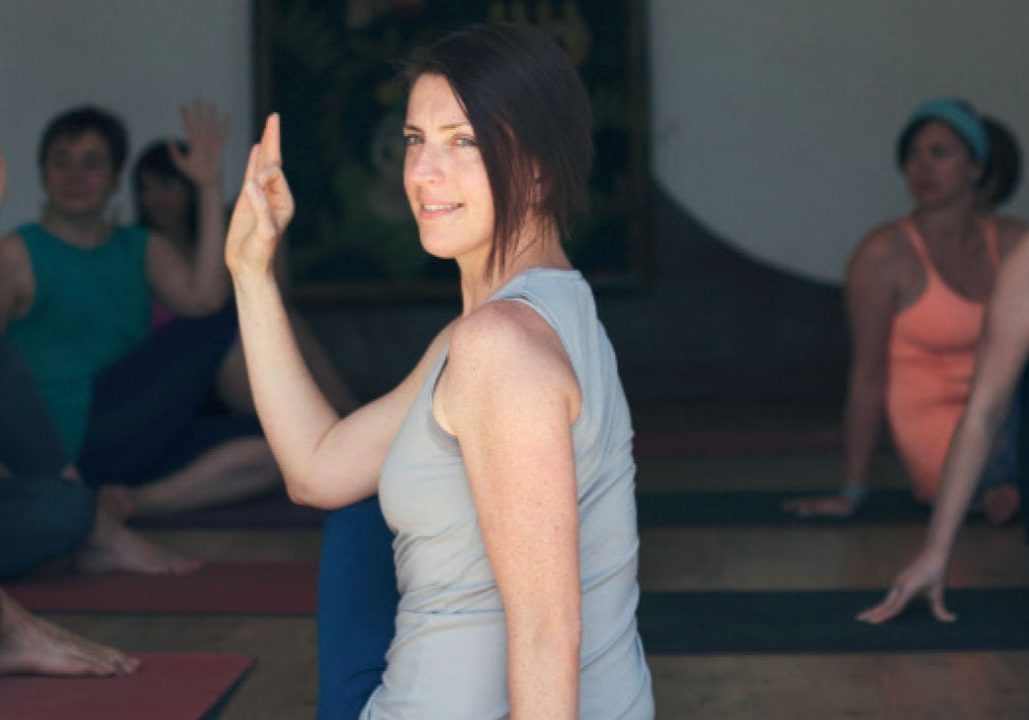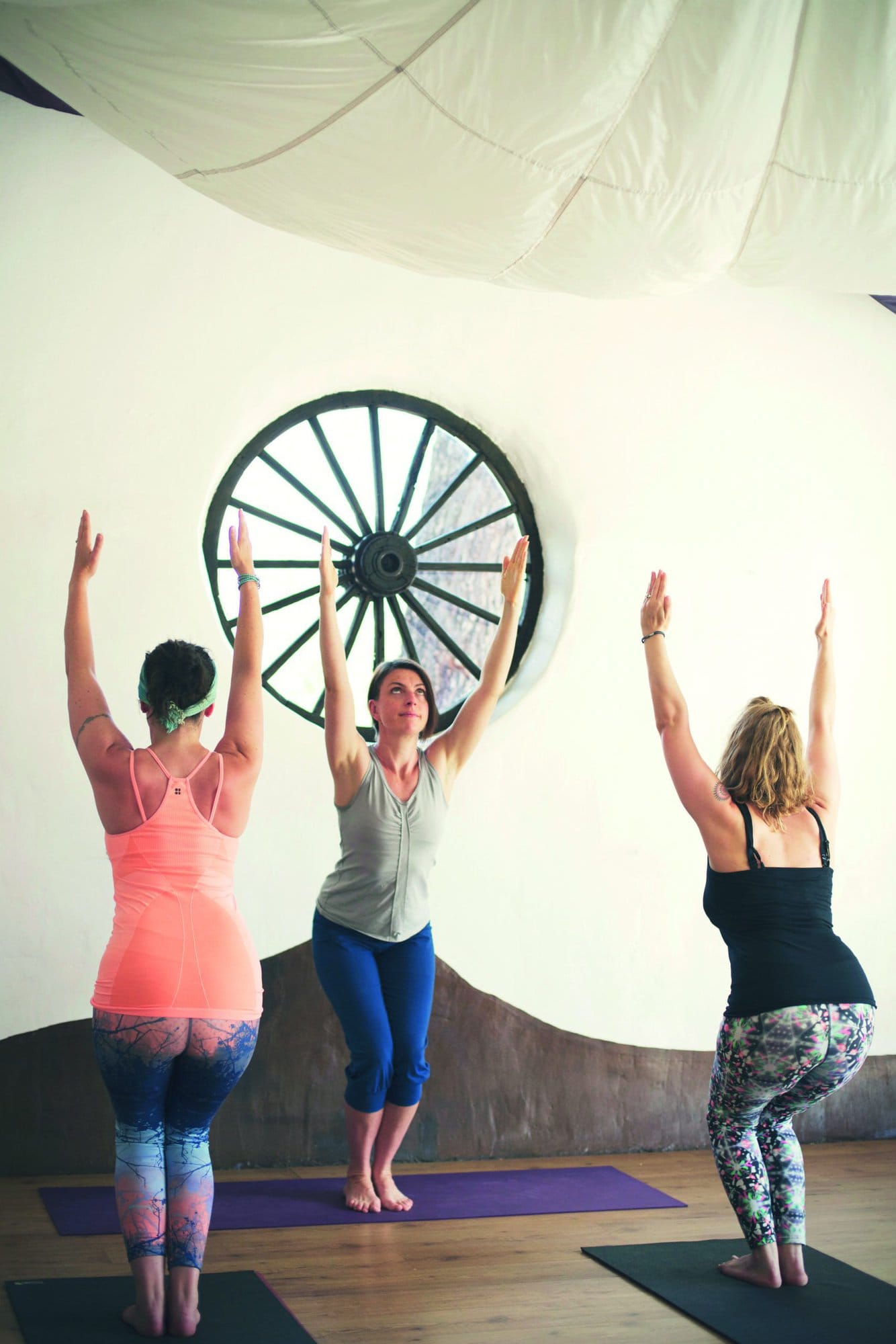
Building an online yoga community
Creating a yoga community in your online classes and trainings. By Sally Parkes
When yoga started to move away from inperson events and to more online classes, workshops and trainings, many of us were a little sceptical about the authenticity of this approach and hoped that we would be ‘back to normal’ in the near future. Personally, I was nervous about the technical side of teaching online and did not think that my yoga clients and students would be interested to continue their yoga practice and learning in this way.
Fast forward two years, however, and we now have some wonderful online yoga teaching literally at our fingertips. And there are many benefits to this, not just for the yoga students, but also for the teacher leading the online sessions. So, let’s have a look at how and why online yoga teaching can work so effectively, and how as yoga teachers we can use the opportunity to deliver online yoga to create a more sustainable business by serving more people.
THE BENEFITS
Having asked many of my students about what they find appealing about online yoga events, the most common feedback was that because of its convenience, their yoga practice was often more consistent and therefore gave them greater gains more frequently when practicing yoga online.
This is obviously fantastic for the yogi or yogini, but also for the teacher as this means we can enjoy greater client retention and a more sustainable business as a result. Another huge benefit is the cost. There are fewer overhead costs when teaching from home or at a low-cost venue, which allows the teacher to feasibly offer their services at a lower cost if they wish to, which again makes it more accessible for the general public.
Sometimes the recordings of the sessions can also be sent out to the class as a free bonus or for extra cost. This is particularly helpful when offering yoga training, as it can be very challenging for the student to take in all the information being given immediately, especially for people who are neuro-diverse and process information in a non-linear manner. So having the recordings to refer back to, and to go though in a self-paced style can be invaluable to the participants overall learning experience.
I have also found that when the student becomes part of your online yoga event community, they are often open to subscribing to additional online connections such as Facebook and WhatsApp groups, and online meet-ups via Zoom and other similar platforms. This can be very helpful to give the yogi a sense of belonging, and helps them connect with other likeminded people, which can sometimes lead to people meeting up in person.
And this is exactly what happened with a recent 200-hour yoga teacher training of mine, when some of the students attended each others in-person classes and three of the students then attended my in-person retreat in Spain. This just goes to show that online teaching can sometimes be the start of real in-person relationships with people that we would not have been able to connect with, without the initial online element.
But how, as yoga teachers, do we get started with creating an online presence? Well, any new venture requires a leap of faith and a little knowhow. So now I invite you to take that leap, and then check out these few tips on getting started.
- Get to know your followers or your audience by asking if they would like online classes and events. Then ask about timings and subjects that they would like to explore, and consider what your strengths are with regards to teaching. For example, womens’ circles are popular right now so if your following is mostly women, and your teaching strength is to energetically hold the space, then this may work for you and your client base. Or if you have a background in anatomy, for example, maybe a workshop about spine health or hip joint mobility would work well.

- Then, once you are clear on what you are going to offer, begin your promotion. In my experience, spreading the promotional workload across different platforms works well and helps you to reach a wider audience. Newsletters (brief but regular campaigns works best) are great to let people know what you are offering. Then Facebook groups and WhatsApp groups can be helpful to keep the chat going amongst the participants without a huge input from you. Furthermore, if using Facebook or Instagram, you can also offer regular live chats where the viewer can post questions for you to answer allowing for valuable interactions. This helps the follower feel recognised and valued, which is, of course, a basic human need.
- Then, get ready to be disciplined enough to put the work in on a regular basis, as consistency builds trust between teacher and student.
- Set a budget on not only what you want to spend on promoting your online presence, but also on how much time you want to spend on it (bear in mind, that time is more valuable than money).
- Use your in-person teaching events to promote your online services and always have flyers or cards with you to give out at the end of your sessions. Or better still, wear your brand while you teach on a T-shirt or tank top.
- Offer one-off in-person events but at a greater cost, and consider streaming live to those who cannot attend.
- Also know that there will be teething issues, but we are all learning on the job so practice ahimsa and be kind to yourself.
- And above all, know that possibilities are endless but also be aware that you can’t please everyone. So ultimately make it work for clients and for you.
Sally Parkes has run the Sally Parkes Yoga Teacher Training Academy since 2010 and offers teacher trainings in yoga for all feminine cycles: fertility, pregnancy, postnatal and menopause. She is also the author of The Manual of Yoga Anatomy and The Yoga Healing Bible. Visit: sallyparkesyoga.com and via Instagram @sallyparkesyoga


